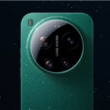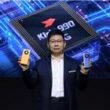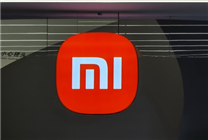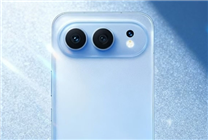ASML Unveils Advanced Lithography Machines at China International Import Expo
Summary:
- ASML presented two new lithography machines, TWINSCAN XT:260 and TWINSCAN NXT:870B, at the China International Import Expo.
- These machines are targeted at advanced packaging applications rather than traditional chip lithography.
- ASML aims to seize market opportunities in packaging lithography amid evolving technology demands.
On November 7, Kuai Technology highlighted ASML’s recent showcase at the 8th China International Import Expo, where the Dutch company unveiled two advanced lithography machines: the TWINSCAN XT:260 and TWINSCAN NXT:870B. Unlike conventional lithography systems used for chip production, these machines are specifically designed for advanced packaging applications, such as 3D packaging, which is becoming increasingly important in the semiconductor industry.
Market Dynamics: A Shift in Focus
In a notable shift, it appears the dynamic of the lithography machine market is evolving. Rather than competing directly with domestic manufacturers for high-end DUV and EUV lithography business, ASML is now targeting the burgeoning market for packaging lithography machines that many Chinese companies are developing. This strategic pivot indicates ASML’s recognition of the growing significance of advanced packaging, especially related to AI chip technology.
Technical Specifications and Production Efficiency
The TWINSCAN XT:260 is an i-line lithography machine utilizing a 365nm light source, featuring scanning exposure capabilities. Its resolution reaches up to 400nm, an NA of 0.35, and it boasts impressive throughput, achieving a wafer output of 270 wafers per hour. This model is capable of processing 300mm wafers, with a maximum thickness of 1.7mm, in contrast to the more typical thickness of 775um.
ASML claims that the production efficiency of the TWINSCAN XT:260 surpasses that of similar machines, such as the Canon FPA-5520iV, by a factor of four, positioning it as an attractive option for manufacturers focused on maximizing efficiency.

In contrast, the TWINSCAN NXT:870B offers even more advanced features. This KrF lithography machine operates at a wavelength of 248nm, achieving a resolution of up to 110nm and an NA of 0.8. With a wafer output of 400 per hour, it enhances production efficiency further, meeting the rigorous demands of modern semiconductor manufacturing.

Importance of Packaging Lithography
ASML’s strategy underscores the increasing importance of packaging technologies, particularly as they relate to AI chips. As the demand for advanced packaging solutions rises, ASML is not only enhancing its existing product lines but is also venturing into a market that is proving essential for future technological advancements.
Although the price point for these packaging lithography machines is significantly lower—estimated not in the billions like EUV machines—their widespread use and potential growth are substantial. This approach allows ASML to capture a different segment of the market and position itself favorably amid shifting technological trends.
Domestic Market Considerations
Simultaneously, ASML faces challenges within the domestic Chinese market, especially concerning its EUV lithography machines. Export restrictions mean these high-end systems cannot be sold, yet the growing sophistication of packaging lithography machines provides a pathway for ASML to capitalize on the evolving landscape without the barriers imposed on its EUV offerings.
ASML’s focus on packaging solutions exemplifies a strategic adaptation to market needs, highlighting the significance of flexibility in technology development and market strategies. As the semiconductor industry continues to evolve, the role of packaging technologies will undoubtedly grow, making ASML’s latest innovations potentially game-changing for manufacturers operating in this space.
Conclusion
ASML’s unveiling of the TWINSCAN XT:260 and TWINSCAN NXT:870B signifies a pivotal moment in lithography technology, aligning product offerings with current industry needs. By concentrating on the advanced packaging realm, ASML not only aims to secure its market position but also plays a crucial role in fostering innovation within the semiconductor sector. As demand for new technologies escalates, these lithography machines stand to make a substantial impact on the future of chip production and packaging, driving growth and efficiency in a rapidly changing market landscape.






